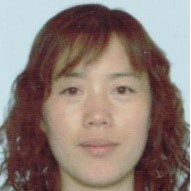Novel Approach for Natural Product Separation from Plants
A special issue of Separations (ISSN 2297-8739). This special issue belongs to the section "Analysis of Natural Products and Pharmaceuticals".
Deadline for manuscript submissions: closed (20 April 2023) | Viewed by 14316
Special Issue Editors
Interests: separation of natural products; allelochemical; plant interspecific chemical relationship
Special Issues, Collections and Topics in MDPI journals
Interests: natural products; screening of biological activities; establishment of nano drug loading system
Interests: bioactive compounds; separation of natural compounds; sustainable extraction techniques; bioactivity evaluation of natural products; development and utilization of natural products
Special Issue Information
Dear Colleagues,
There are many types of natural products in plants, including flavonoids, phenols, coumarins, lignans, alkaloids, terpenoids, steroids, saponins, etc. Natural products from plants have attracted much attention because of their various physiological functions. Today, natural products are applied in medicine, veterinary medicine, antibiotics, insecticides, herbicides and condiments, cosmetics, etc. Traditional extraction methods of natural products often have defects such as high solvent consumption, low extraction efficiency, and environmental pollution. Therefore, it is extremely important to develop more efficient, convenient, and environmentally friendly extraction methods for further applications of natural products. This Special Issue aims to publish high-quality research papers and reviews on novel methods in separation and purification of natural products from plants.
Prof. Dr. Chunjian Zhao
Dr. Wei Wang
Dr. Meng Luo
Guest Editors
Manuscript Submission Information
Manuscripts should be submitted online at www.mdpi.com by registering and logging in to this website. Once you are registered, click here to go to the submission form. Manuscripts can be submitted until the deadline. All submissions that pass pre-check are peer-reviewed. Accepted papers will be published continuously in the journal (as soon as accepted) and will be listed together on the special issue website. Research articles, review articles as well as short communications are invited. For planned papers, a title and short abstract (about 100 words) can be sent to the Editorial Office for announcement on this website.
Submitted manuscripts should not have been published previously, nor be under consideration for publication elsewhere (except conference proceedings papers). All manuscripts are thoroughly refereed through a single-blind peer-review process. A guide for authors and other relevant information for submission of manuscripts is available on the Instructions for Authors page. Separations is an international peer-reviewed open access monthly journal published by MDPI.
Please visit the Instructions for Authors page before submitting a manuscript. The Article Processing Charge (APC) for publication in this open access journal is 2600 CHF (Swiss Francs). Submitted papers should be well formatted and use good English. Authors may use MDPI's English editing service prior to publication or during author revisions.
Keywords
- natural products
- extraction
- separation
- purification
- green solvent
- novel extraction methods
- sustainable extraction methods
- fingerprinting
- efficient separation techniques
- Plants
- free solvent







